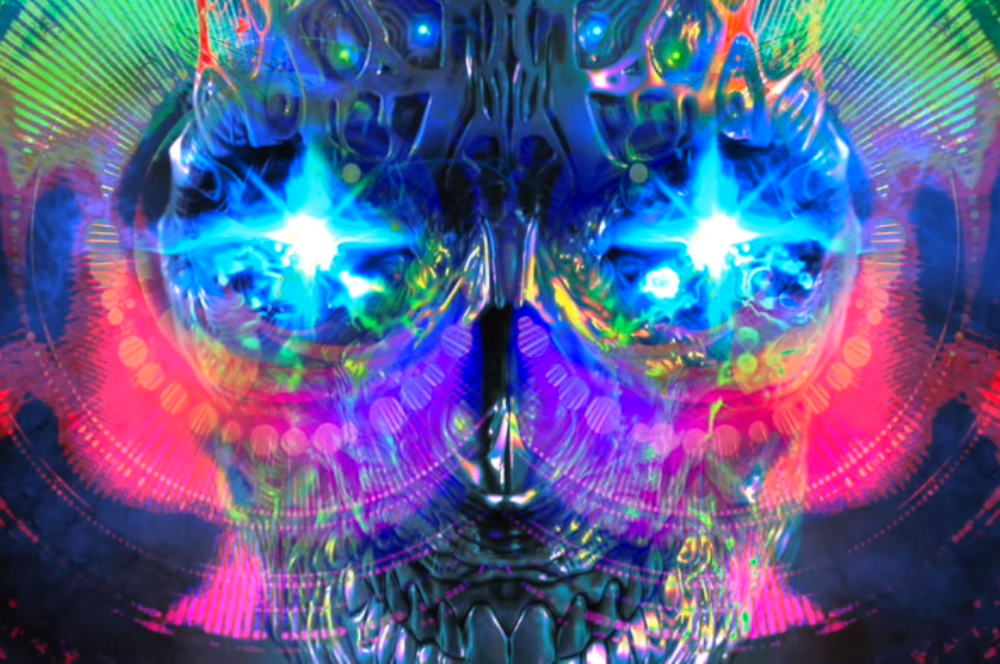
I’m all about gaining insight from altered states of consciousness. But I’m also all about putting your body through as little duress as possible. So, I’m always interested in learning new ways to expand my mind without substances. After achieving altered states through hypnosis, breathwork, and ecstatic dance, I thought I’d look into binaural beats — songs also known as “digital drugs” that claim to produce highs, insights, and even hallucinations.
Binaural beats, which you can purchase online or listen to on Youtube, work (or claim to work) by presenting different tones at slightly different frequencies to each ear at different intervals, creating a “neurophysiological beat pattern,” explains James Giordano, professor of neurology and biochemistry at Georgetown University Medical Center. The brain stem will bring these two patterns together and activate certain higher areas in your auditory cortex. Allegedly, this activation of brain networks can in turn produce distinct psychological states or sensory experiences in some people. Some digital drugs, for example, aim to elevate the listener’s mood by producing serotonin and/or dopamine.
To see if this actually works, I listened to some of the first few songs I found on Youtube after searching “digital drugs,” which were dramatically named “DIGITAL DRUGS – Binaural beats – WARNING High Intensity,” “DIGITAL DRUGS – strong hallucinate from binaural beats!,” “WARNING! POWERFUL ACID TRIP REPLICATION SIMULATION (BINAURAL BEATS),” “Dxm Trip Replicator – Digital Dissociative Digital Drugs,” and “Hands Free Orgasm 2 – Binaural No Hands Ejaculation” (I couldn’t resist). I also downloaded one from the site Binaural Beats Meditation. They all had a similar sound — very simple, with just a few tones that changed very slowly. Some had a spiritual feel to them, while others sounded more like the soundtrack to a movie about an alien invasion.
I’m sorry to say, however, that I did not experience any drug-like effects. In fact, I felt no change in mood. I experienced more of an uplift after I got bored and put on Ariana Grande. The “Hands Free Orgasm 2” song, however, did give me a surge of endorphins via its comments, which included “don’t play this out loud. My dad started to ovulate and a house spider sprinted toward him and launched itself up his arsehole” and “after shitting out a coconut at 29:45 I realized that this video is in fact an ancient alien trick of the illuminati to control our brains.”
Giordano was not surprised by the lack of effect the songs had on me. While binaural beats could work in theory, the science is “really sketchy,” he says. Specifically, the assumption that songs can change someone’s state of mind by evoking certain brain states is based on a logical fallacy. While certain moods are correlated with certain EEG activity, that doesn’t necessarily mean that creating this EEG activity will produce these moods, says Giordano.
Still, some people swear that they’ve experienced binaural beats’ intended effects. Limited research has found changes in memory, creativity, attention, and mood in people who listened to binaural beats. There was one report of kids in Oklahoma whose teacher thought they were drunk or high when they were actually listening to digital drugs.
One reason this might be happening is that music inherently has the potential to affect the listener’s mood. “We know what we think is creepy, happy-sounding, or sad music,” says Giordano. “So the idea that sounds can create or evoke a brain state is real. When people say this makes them feel this way or that way, there’s no reason to doubt that, just as there’s no reason to doubt when someone says ‘when I listen to Led Zeppelin, I feel a particular way.’” Another possibility is that people affected by binaural beats are experiencing the placebo effect. “There are neurological states that come as a consequence of suggestibility,” says Giordano.
However, he adds, “Is there any evidence to suggest this type of stuff will produce a hallucinogenic high the way you’d see with a psychedelic, an active high the way you’d see with cocaine, or an emotional high like you’d see with cannabinoids? There isn’t.”
This raises an interesting question: should kids be able to use digital drugs? Even though the evidence of their effects isn’t clear, Giordano believes that since kids and teens are very suggestible, they may be more susceptible to binaural beats’ effects, whether they’re coming from the power of suggestion or something more.
The bottom line is that “there needs to be more research,” he says. “We need to take these experiences seriously and examine all the conditions and factors that go into these experiences, and until we do that, we need to side on the side of scientific skepticism and say, it’s unlikely that the mechanisms in these claims are occurring, but maybe something’s going on and we need to examine that in greater detail.”

